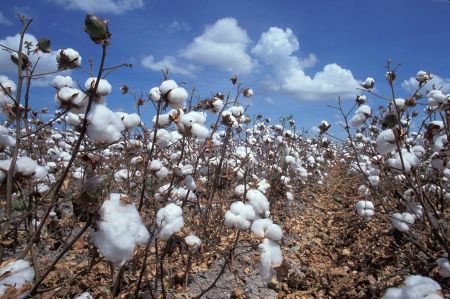Cotton field at Manavgat at full flower
- Written by Portal Editor
Every year there are several thousand tourists who combine their vacation in Turkey with the purchase of still cheaper textiles.
If the numbers are also declining due to cheaper offers in Europe, one can still speak of Turkish textile tourism, which is caused on the one hand by the wage gap in production but also in the raw material supply. A large part of the cotton required for textile production is also produced in Turkey. Sometimes there are small fields belonging to private cotton farmers that are laboriously harvested by hand, but there are mainly fields that are processed on a large scale.
Cotton - a natural product for centuries
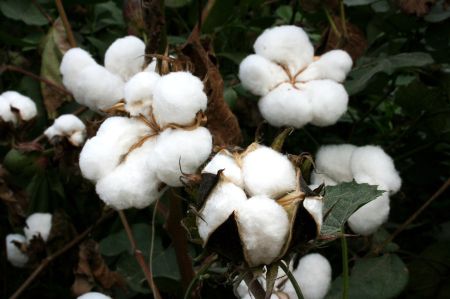 As early as 500 BC, the Greek philosopher and historian Herodotus knew the following sentence about Indian cotton: "There are wild bushes from whose fruits one can obtain wool that far surpasses the beauty and quality of sheep's wool. The Indians make their clothes from this cotton.”
As early as 500 BC, the Greek philosopher and historian Herodotus knew the following sentence about Indian cotton: "There are wild bushes from whose fruits one can obtain wool that far surpasses the beauty and quality of sheep's wool. The Indians make their clothes from this cotton.”
The use of cotton was known much earlier, so today it is certain that the Egyptians used cotton for the production of light clothing around 12,000 years ago. In ancient Babylon, cotton was so important that it was called white gold. Finds of clothing in caves in Mexico indicate an age of more than 7,000 years.
Cotton as a luxury good - more expensive than silk
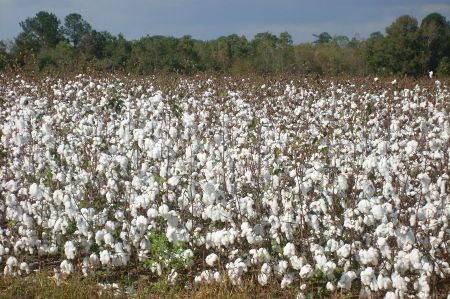 However, the most accurate records of the use of cotton come from India and indicate that the plant was already cultivated more than 3,000 years ago. In general, India has probably cultivated the greatest knowledge and the greatest variety of cotton varieties. The centers of cotton processing here were the regions of Bengal, Punjab, Coromandel and above all Gujarat, whose cotton reached the Middle East via a wide variety of trade routes.
However, the most accurate records of the use of cotton come from India and indicate that the plant was already cultivated more than 3,000 years ago. In general, India has probably cultivated the greatest knowledge and the greatest variety of cotton varieties. The centers of cotton processing here were the regions of Bengal, Punjab, Coromandel and above all Gujarat, whose cotton reached the Middle East via a wide variety of trade routes.
Up until the 16th century, cotton was a luxury item that was usually more expensive than silk. The reasons for this were simply the high labor costs involved in removing the seed pods from the cotton and the tedious carding, aligning the loose fibers into a pile. Compared to sheep's wool, but also to silk, cotton has a disadvantage that required a lot of work due to the very short fiber lengths. Historical records show that it took 13 working days to produce just one pound of workable cotton thread, compared to just 6 working days for a comparable quantity of silk thread. It only took two to five working days to produce the same amount of thread from linen and only two working days for virgin wool. Even with the beginning of technical industrialization in England, which used Indian cotton due to its colonial policy, English spinners around 1750 were not able to spin cotton threads that were strong enough to produce pure cotton textiles. This art was still reserved for the Indians.
Cotton harvest by seasonal workers
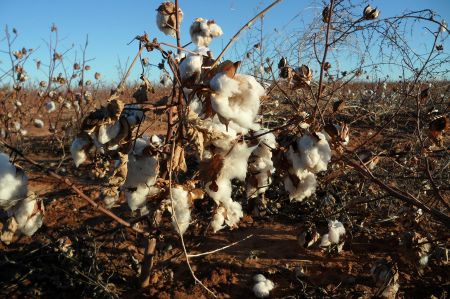 Depending on the region, the cotton fields are usually planted in March or April and harvested in September. For this purpose, cheap workers are also used in this country, who are mostly paid as seasonal workers and often come from the East or even from abroad. While the black slave-owning methods of America's cotton crop may have been unique in history, wage dumping is still the order of the day. The large, cotton-like flowers are picked and stuffed into large sacks for transport. It is important for the textile industry to obtain fiber lengths that are as long as possible, which is then compensated accordingly in the price. Fiber length is also referred to as staple length in the industry. Best quality, i.e. staple length, is usually provided by Gossypium barbadense (common trade names are Egyptian Mako cotton, Pima cotton and Sea Island cotton), which reach staple lengths of over 32 millimeters.
Depending on the region, the cotton fields are usually planted in March or April and harvested in September. For this purpose, cheap workers are also used in this country, who are mostly paid as seasonal workers and often come from the East or even from abroad. While the black slave-owning methods of America's cotton crop may have been unique in history, wage dumping is still the order of the day. The large, cotton-like flowers are picked and stuffed into large sacks for transport. It is important for the textile industry to obtain fiber lengths that are as long as possible, which is then compensated accordingly in the price. Fiber length is also referred to as staple length in the industry. Best quality, i.e. staple length, is usually provided by Gossypium barbadense (common trade names are Egyptian Mako cotton, Pima cotton and Sea Island cotton), which reach staple lengths of over 32 millimeters.
Cotton doesn't scratch
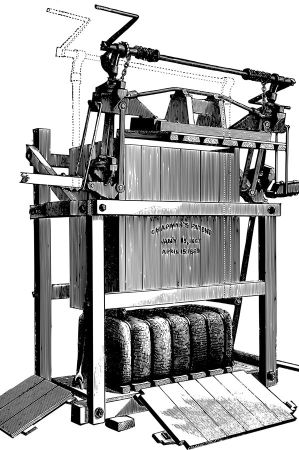 Due to the strong trend back to nature, cotton has again achieved a high status in the textile industry, despite the now so diverse "all-rounder" synthetic fibers. On the one hand, cotton easily absorbs dirt, but it also gives it off again very easily without losing any of its quality or other properties. The biggest advantage of cotton is probably its skin-friendliness and allergy potential. Cotton does not scratch, is a 100% natural material that has hardly any negative properties.
Due to the strong trend back to nature, cotton has again achieved a high status in the textile industry, despite the now so diverse "all-rounder" synthetic fibers. On the one hand, cotton easily absorbs dirt, but it also gives it off again very easily without losing any of its quality or other properties. The biggest advantage of cotton is probably its skin-friendliness and allergy potential. Cotton does not scratch, is a 100% natural material that has hardly any negative properties.
Fortunately, more and more people are also looking for 100% pure cotton fibers when buying their textiles, which are also labeled accordingly due to legal regulations. Whether it's underwear, socks, trousers or sweaters, your body will thank you.
Please read as well:
Cotton production in Turkish town of Söke
